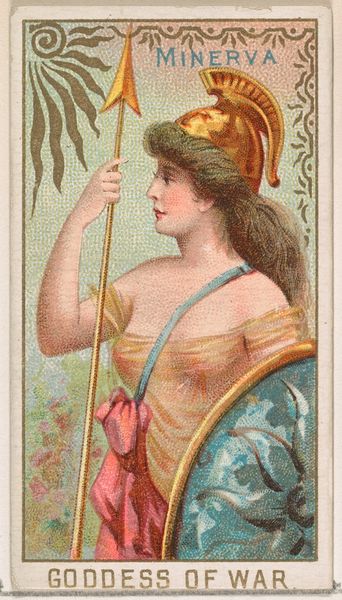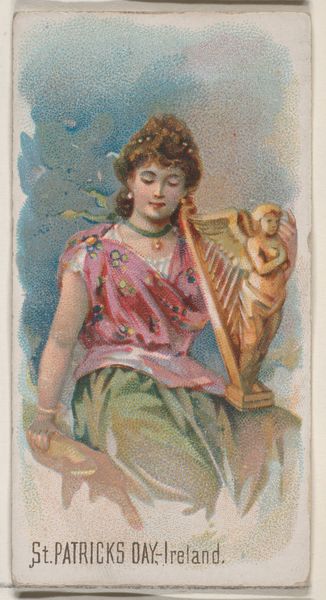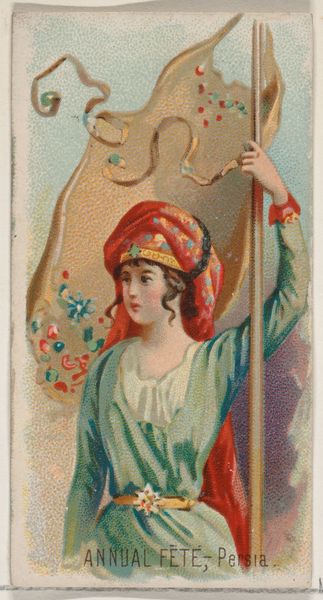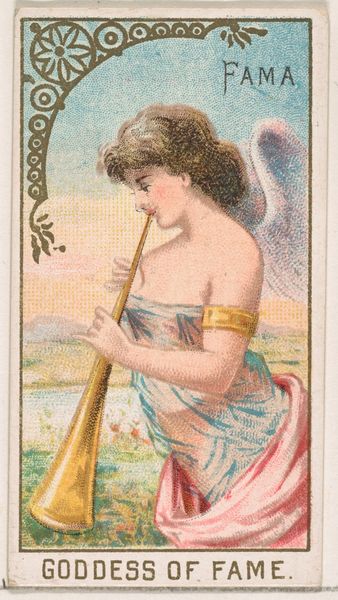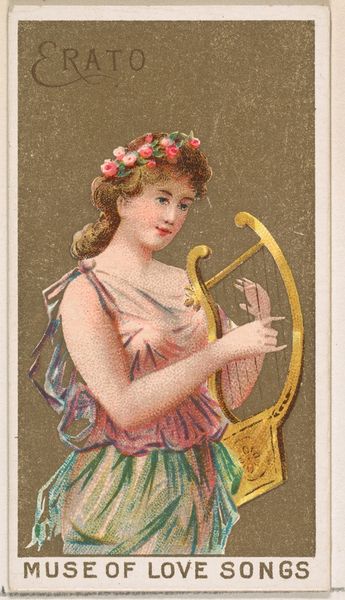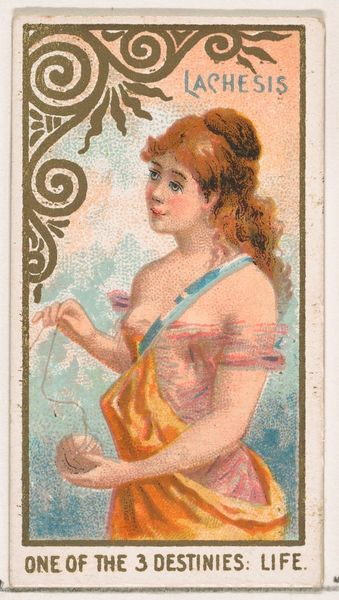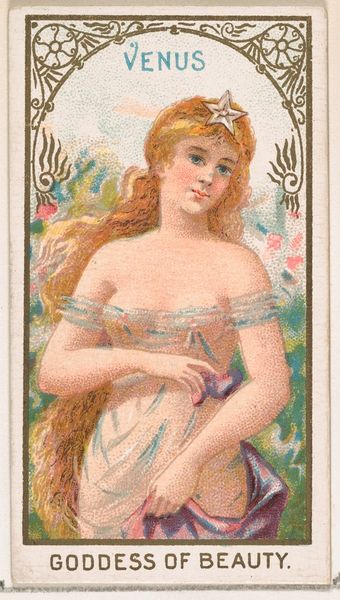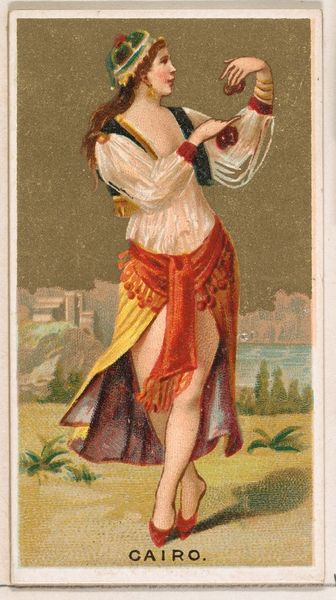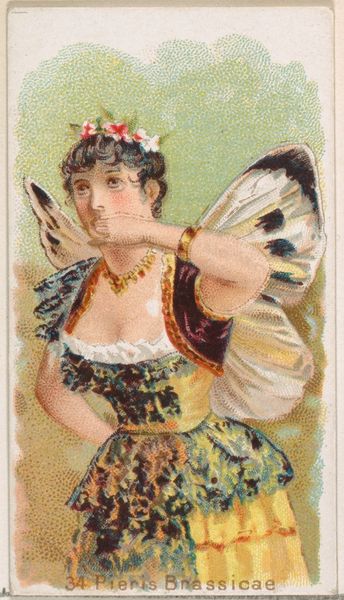
Egyptian Harp and Pandean Pipes, from the Musical Instruments series (N121) issued by Duke Sons & Co. to promote Honest Long Cut Tobacco 1888
0:00
0:00
drawing, print, watercolor
#
portrait
#
drawing
# print
#
ancient-egyptian-art
#
watercolor
#
academic-art
#
watercolor
Dimensions: Sheet: 4 1/16 × 2 1/2 in. (10.3 × 6.4 cm)
Copyright: Public Domain
This chromolithograph, created around 1888 by W. Duke, Sons & Co., showcases an "Egyptian Harp" alongside "Pandean Pipes" to promote Honest Long Cut Tobacco. Note how the harp, cradled by a figure adorned in pseudo-Egyptian garb, evokes the ancient world's allure, a symbol of harmony and order. Yet, the harp's significance extends far beyond its strings. In ancient Egypt, harps were associated with funerary rituals and the afterlife, instruments that could transport souls to the realms of gods. We see this motif echoed in later eras where musical instruments appear in funerary scenes. The Pandean pipes are more earthly, directly linking to Pan, the Greek god of the wild. These instruments transcend time, reflecting the human desire for harmony and a connection to the divine and the wild. The depiction of these instruments, meant to promote tobacco, taps into the human psyche, blending nostalgia, desire, and memory. The tobacco gains a symbolic layer, suggesting pleasure, escapism, and a bridge between past and present.
Comments
No comments
Be the first to comment and join the conversation on the ultimate creative platform.
